Take the time to honor and support your friends and colleagues. Be sure to add the division award winners’ talks to your calendar; they are scheduled in various symposia throughout the week.
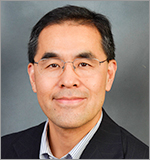 Electronics and Photonics Division Award
Electronics and Photonics Division Award
Monday, May 27 | 0800h
Austin Ballroom 1 (SH)
New Directions in GaN Electronic and Photonic Devices Enabled By Electrochemical Processes
By Jung Han
Jung Han is the William A. Norton Professor in Technological Innovation and a professor of electrical engineering at Yale University. He received his PhD in electrical engineering from Purdue University in 1992. His research focuses mainly on epitaxial growth and nanoscale synthesis of wide-bandgap semiconductors for energy-efficient lighting, display, and power applications.
Han’s doctoral and postdoctoral work at Purdue resulted in one of the first semiconductor blue-green diode lasers from the II-VI ZnSe system. Between 1996 and 2001, Han led a team at Sandia National Laboratories in studying the heteroepitaxial science of III-nitride semiconductors and pioneered the usage of in situ diagnostics that have since then become industry standard. He was responsible for demonstrating some of the earliest AlGaN ultraviolet LEDs and transistors.
He is the cofounder of Saphlux, a start-up company based on his inventions for semipolar GaN light-emitting diodes.
has published more than 280 papers in peer-reviewed journals and holds more than 20 U.S. and international patents. Han has received numerous awards, including a Department of Commerce R&D 100 Award, an MRS Ribbon Award, and an EMC Best Paper Award. Han is a member of the Connecticut Academy of Science and Engineering and a fellow of the Institute of Physics, the Institute of Electrical and Electronic Engineers, and the Optical Society of America.
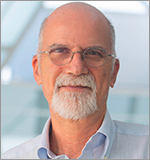 Nanocarbons Division Richard E. Smalley Research Award
Nanocarbons Division Richard E. Smalley Research Award
Monday, May 27 | 0800h
City View 6 (SH)
Multifunctional Hybrid Carbon Interfaces
By Maurizio Prato
Maurizio Prato graduated from the University of Padova, where he was appointed assistant professor in 1983. In 1992, he moved to the University of Trieste as an associate professor, later becoming a full professor in 2000. In 2015, he also took on the role of Ikerbasque research professor at CIC biomaGUNE in Spain.
He spent sabbatical terms at Yale University and the University of California, Santa Barbara. He was the recipient of an ERC Advanced Research Grant in 2008 and became a member of the Accademia Nazionale dei Lincei in 2010 and the Istituto Veneto di Scienze Lettere ed Arti in 2018. He is also a member of Academia Europea and the European Academy of Sciences.
His research focuses on the synthesis and applications of new functional materials. He has worked with carbon nanostructures, including fullerenes, carbon nanotubes, and graphene, developing a series of reactions that make these species more biocompatible, less or even nontoxic, amenable to further functionalization, and easier to manipulate. He is interested in transferring the properties of these materials into applications, which include spinal cord repair, the splitting of water, and the reduction of carbon dioxide into useful chemicals.
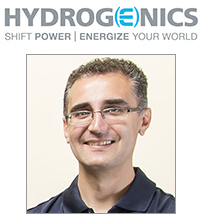
Industrial Electrochemistry and Electrochemical Engineering Division New Electrochemical Technology (NET) Award
Monday, May 27 | 1400h
San Antonio Ballroom B (SCC)
Development and Commercialization of Large Scale PEM Water Electrolysis
By Rainey Yu Wang of Hydrogenics Corporation
Rami Michel Abouatallah worked for 15 years at Hydrogenics Corporation, where he was a senior research engineer from 2002 to 2008, and then manager of advanced stack development from 2008 to 2017. He was passionate about PEM fuel cells and electrolyzers, and a true believer in hydrogen technology. From 2010 to 2017, Abouatallah led the development of a large-scale PEM electrolyzer stack platform, which is the subject of the 2019 ECS Industrial Electrochemistry and Electrochemical Engineering Division New Electrochemical Technology (NET) Award.
During his career at Hydrogenics Corporation, Abouatallah coauthored more than 15 peer-reviewed journals, conference publications, as well as a number of industrial studies. He held a number of Canadian and U.S. patents.
In 2002, Abouatallah received his PhD degree from the Department of Chemical Engineering and Applied Chemistry at the University of Toronto. His doctoral dissertation was “Reactivation of Nickel Cathodes by Vanadium Species during Alkaline Water Electrolysis.” During his study at the University of Toronto, he was the recipient of a dozen undergraduate and graduate awards.
Abouatallah passed away unexpectedly at home on December 8, 2017, at the age of 43. He will always be remembered by his family, friends, and colleagues.
 Energy Technology Division Supramaniam Srinivasan Young Investigator Award
Energy Technology Division Supramaniam Srinivasan Young Investigator Award
Monday, May 27 | 1440h
San Antonio Ballroom B (SCC)
Towards Deterministic Electrode Design: Elucidating the Role of Surface Chemistry and Microstructure on Flow Battery Performance
By Fikile Brushett
Fikile Brushett is an associate professor in the department of chemical engineering at the Massachusetts Institute of Technology (MIT), where he holds the Cecil and Ida Green Career Development Chair. He received his BSE in chemical and biomolecular engineering from the University of Pennsylvania in 2006 and his PhD in chemical engineering from the University of Illinois at Urbana-Champaign in 2010 under the supervision of Professor Paul J. A. Kenis.
From 2010 to 2012, he was a director’s postdoctoral fellow in the Electrochemical Energy Storage Group at Argonne National Laboratory under the supervision of Dr. John T. Vaughey. In 2013, he started his independent career at MIT, where his research group seeks to advance the science and engineering of electrochemical technologies that enable a sustainable energy economy.
He is especially interested in the fundamental processes that define the performance, cost, and lifetime of present-day and future electrochemical systems. His group currently works on redox flow batteries for grid storage and electrochemical processing of carbon dioxide and biomass. He also serves as the research integration co-lead for the Joint Center for Energy Storage Research, a DOE-funded Energy Innovation Hub.
 Physical and Analytical Electrochemistry Division David C. Grahame Award
Physical and Analytical Electrochemistry Division David C. Grahame Award
Tuesday, May 18 | 0830h
Trinity 3 (SHS)
Electroanalytical Techniques for Studying Nitrogenase Enzyme Mechanisms
By Shelley Minteer
Shelley Minteer is a Utah Science Technology and Research Initiative professor in both the Department of Chemistry and the Department of Materials Science and Engineering at the University of Utah.
She received her PhD in analytical chemistry at the University of Iowa in 2000, under the direction of Professor Johna Leddy. After receiving her PhD, she spent 11 years as a faculty member in the Department of Chemistry at Saint Louis University before moving to the University of Utah in 2011.
Minteer was the technical editor for the Journal of The Electrochemical Society from 2013 to 2016 and is presently an associate editor for the Journal of the American Chemical Society.
Minteer has won several awards, including the Luigi Galvani Prize of the Bioelectrochemical Society, the American Chemical Society Division of Analytical Chemistry Award in Electrochemistry, the International Society of Electrochemistry Tajima Prize, and the Society of Electroanalytical Chemists’ Young Investigator Award. She has also been named Fellow of The Electrochemical Society.
Her research interests focus on electrocatalysis and bioanalytical electrochemistry. She has expertise in electrosynthesis, biosensors, biofuel cells, and bioelectronics.
 Industrial Electrochemistry and Electrochemical Engineering Division H. H. Dow Memorial Student Achievement Award
Industrial Electrochemistry and Electrochemical Engineering Division H. H. Dow Memorial Student Achievement Award
Tuesday, May 28 | 0900h
Pearl 5 (SH)
Transport Study inside Porous Layers of PEFC Using Direct Numerical Simulation
By Pongsarun Satjaritanun
Pongsarun (Boom) Satjaritanun received his BS and MS in mechanical engineering from Chiang Mai University, Thailand.
He is currently working toward his doctoral degree in chemical engineering at the University of South Carolina. His current research focuses on (1) numerical modeling of transport phenomena inside micro- to nano-structured porous materials in fuel cell systems, (2) developing a mathematical model for electrochemical impedance spectroscopy to explain the behavior of microbial activities for methane production from organic waste, (3) numerical modeling and design optimization of solid particle mixing with contra-rotating impellers, and (4) developing simulations of multiphase, reactive flow with vaporization of H2SO4 and SOX in a solar-driven sulfuric acid decomposition reactor.
 Dielectric Science and Technology Division Thomas D. Callinan Award
Dielectric Science and Technology Division Thomas D. Callinan Award
Tuesday, May 28 | 1410h
City View 2 (SH)
Colorful Adventures in the Field of Dielectrics Science: Some Highs and Lows with a Touch of a Chilly Forecast
By Sean King
Sean King has worked in the semiconductor industry for 22 years and currently serves as a senior technical contributor within Intel Corporation’s Portland Technology Development Division. At Intel, King has held a variety of technical positions in the development of Intel’s 0.35 m–7 nm technologies, and presently leads the development of various dielectric materials for use in Intel’s < 7 nm technologies. He is also a faculty member of Intel’s College of Engineering, where he teaches courses in nanoelectronic fabrication, vacuum and plasma science, and thin film deposition processes.
King is highly recognized for his significant contributions to the development, implementation, and fundamental understanding of low-k dielectric materials. In 2004, he received Intel’s highest achievement award for the insertion of low-k dielectrics in the 90 nm technology. Since then, King has made seminal contributions to the growth, characterization, and integration of both low-k and high-k dielectric materials.
Additionally, King is an active member of numerous technical societies, including The Electrochemical Society, the American Vacuum Society, and the Materials Research Society, for which he has served as an organizer of numerous symposia and a member of various society committees. King has authored or coauthored over 175 publications and 50 patents in the fields of dielectric and semiconducting materials.
King holds a BS degree in materials engineering from Virginia Tech and a PhD in materials science and engineering from North Carolina State University.
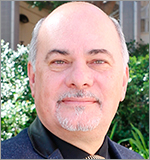 Energy Technology Division Research Award
Energy Technology Division Research Award
Tuesday, May 28 | 1720h
Houston Ballroom C (SCC)
Transition Metal-Nitrogen-Carbon Catalysts for Oxygen Reduction Reaction:Surface Chemistry, Morphology and Reactivity
By Plamen Atanassov
Plamen Atanassov graduated from the University of Sofia with an MS in chemical physics and earned a doctorate from the Bulgarian Academy of Sciences in physical chemistry.
He moved to the U.S. in 1992 and was with the University of New Mexico until 2018. While at the University of New Mexico, Atanassov worked as a research faculty member, participated in a start-up, rose to the rank of distinguished professor of chemical and biological engineering, started the Center for Emerging Energy Technologies, and served as the associate dean for research before assuming his final post as director of the Center for Micro-Engineered Materials.
In October 2018, Atanassov became chancellor’s professor of the Chemical & Biomolecular Engineering Department of the Henry Samueli School of Engineering at the University of California, Irvine. His research is in nanostructured materials and new technologies for energy conversion and storage, focusing on electrocatalysis and bioelectrocatalysis, with applications in fuel cells, electrolyzers, and bioelectrochemical systems.
Atanassov is a fellow of The Electrochemical Society and the National Academy of Inventors. He has served as a vice president of the International Society of Electrochemistry. He holds 55 issued patents, half of which have been licensed and are at the core of several catalysts. He has published more than 370 peer-reviewed papers and 20 book chapters and has edited a book (h-index=70). He has graduated 34 PhD students.
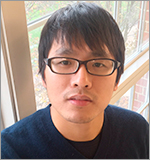 Industrial Electrochemistry and Electrochemical Engineering Division Student Achievement Award
Industrial Electrochemistry and Electrochemical Engineering Division Student Achievement Award
Wednesday, May 29 | 1400h
Pearl 5 (SHH)
Fundamental Understanding on Cell Performance Enhancement of Flow Batteries with Serpentine Flow Field Structures
By Xinyou Ke
Xinyou Ke received his PhD from the Department of Mechanical and Aerospace Engineering at Case Western Reserve University in fall 2018. His PhD dissertation defense was titled “Fundamental Studies on Transport Phenomena in Redox Flow Batteries with Flow Field Structures and Slurry or Semi-Solid Electrodes: Modeling and Experimental Approaches.”
e has been supervised by professors Robert F. Savinell, Joseph M. Prahl, and Jesse S. Wainright. He was previously trained at the Massachusetts Institute of Technology, Harvard University, Case Western Reserve University (MSE), and the South China University of Technology (BSE with honors).
He has focused on exploring fundamentals of high-performance flow batteries with flow field structures, electronic conduction mechanisms of slurry or semi-solid electrodes used for flow batteries, and electrochemical flow capacitors through both modeling and experimental approaches.
To date, he has authored or coauthored more than 10 peer-reviewed journal articles. He was the recipient of the 2018 ECS F. M. Becket Summer Research Fellowship. He served as the treasurer of the ECS Case Western Reserve University Student Chapter from 2016 to 2017.
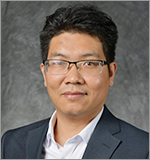 Energy Technology Division Graduate Student Award sponsored by Bio-Logic
Energy Technology Division Graduate Student Award sponsored by Bio-Logic
Thursday, May 30 | 1200h
City View 8 (SHH)
Biomass-Derived Carbon Materials for Next-Generation Electrochemical Energy Storage Systems
By Zan Gao
Zan Gao is currently a mechanical engineering PhD candidate at the University of Virginia under the supervision of Professor Xiaodong Li. Gao received both his BS degree in environmental engineering (2009) and his MS degree in applied chemistry (2012) from Harbin Engineering University.
Gao’s doctoral research focuses on the design and fabrication of next-generation flexible energy storage systems (flexible supercapacitors and flexible batteries) with mechanical durability and chemical stability. He has also made significant contributions to biomass-derived renewable carbon materials for electrochemical energy storage. He has recently begun working on understanding the failure mechanism of flexible energy systems by coupling nanomechanics and electrochemistry.
Gao has published over 40 peer-reviewed articles in various prestigious journals, such as Nature Communications, Nano Letters, Nano Energy, Advanced Functional Materials, Chemistry of Materials, and the Journal of Materials Chemistry A. Additionally, Gao has received several awards and fellowships during his PhD studies, including the Outstanding Graduate Student Award, the William L. Ballard Jr. Endowed Graduate Fellowship, and the Volkswagen Group of North America Fellowship.




